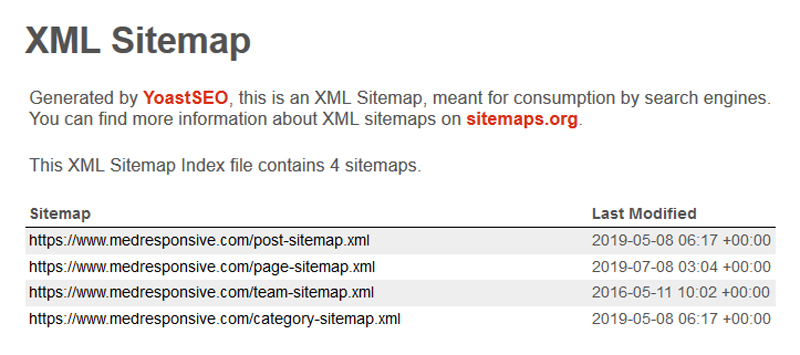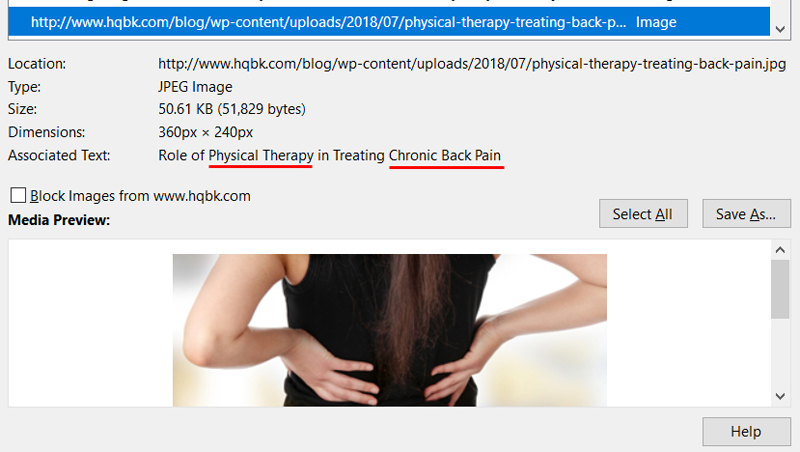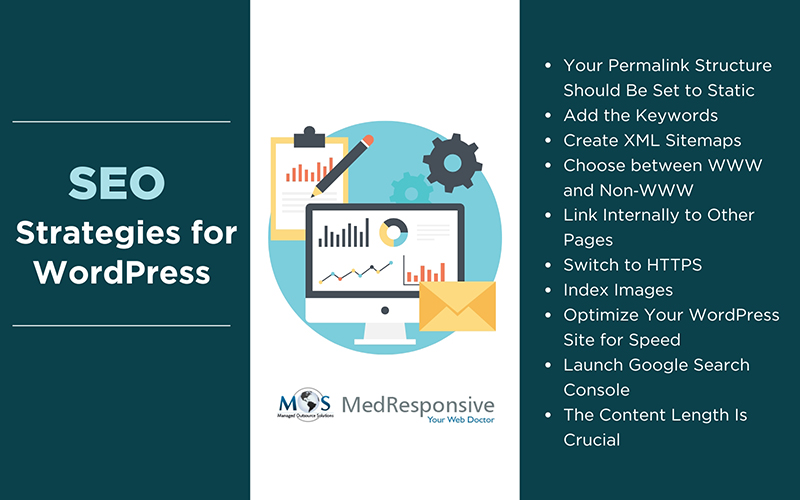WordPress is the framework behind many of the websites and blogs that appear in search engines. It is considered as a factory that makes unique web pages with a variety of themes and plug-ins; it does not require you to have any coding or design knowledge to create and publish your own blog. SEO experts consider it the most powerful blogging and website Content Management System (CMS) platform to build an SEO-friendly website. It also stores your content and allows you to publish web pages by only requiring a domain and a hosting site support. WordPress uses templates to create different looks for a web page. Plug-ins for WordPress that can add functionality include e-commerce, social media, picture galleries, podcasts, videos, newsletters, etc. It is also a mobile-friendly application, which has many responsive templates. The new WordPress 5.2.1 Maintenance Release fixes 33 bugs, and includes features like a newly advanced block editor, accessibility, and internationalization. By adopting the new version and utilizing its features with the help of a WordPress SEO optimization agency, you can protect your sites from several vulnerabilities as well as help in reducing developmental costs and deployment of time.
WordPress recommends updating your sites immediately to the newer versions to keep everything secure. Generally, dynamic web pages with no control over how their outputs are interpreted by the browser, unlike static pages with full control, are vulnerable to issues. This vulnerability appears in the form of login forms, forgotten password forms, etc. Cross-site scripting or XSS is a hacking technique that leverages vulnerabilities in a web application code so that the hacker can send malicious content from an end-user and gather some type of data from the victim. To be more specific, this technique allows an attacker to embed malicious JavaScript, VBScript, ActiveX, HTML, or Flash into a vulnerable web page to trick the user into executing the script on his/her machine to gather data. This technique could be used to manipulate or steal cookies, compromise private or confidential information, create requests that can be mistaken as coming from a valid user or execute malicious code on the end-user systems. Now, WordPress invalidates all the links associated in a password reset email, if the user remembers the password.
Why Optimize Your WordPress Blogs for SEO?
A study by Search Engine Journal shows that the top result on a search results page receives 10 times more clicks than the 10th result, while the second result garners 3 times more clicks than the sixth position. This isn’t just a statistic, it is common sense based on our own search behaviors. We rarely scroll down the page to find information.
If you’re producing valuable content but seeing little traffic, SEO is your answer. By optimizing your WordPress blogs, you can boost your website’s ranking on search engines and attract your target audience. Without SEO, your audience may never discover the products or services you offer.
Let’s see how to optimize a WordPress blog post for SEO success.
Step-by-Step SEO Guide for WordPress Blogs
- Your Permalink Structure Should Be Set to Static: Fundamentally, WordPress’s default permalink structure isn’t search engine optimized. To begin with, it seems like this: http://example.com/your-post-title. Select the Post name option under the Permalink Settings tab in your WordPress dashboard. By doing this, you can make sure that the URL structure stays clear and uncluttered. Consequently, you will contribute to the automatic optimization of your new post URLs. For additional SEO power, you may change your slug to personalize the URLs of specific posts. Enter your desired keywords in the slug area as you proceed down the post creation page. The goal is to ensure that you are substituting particular keywords for your default URL.
- Add the Keywords: For a WordPress blog post to be regarded optimized, keywords must be inserted in key locations throughout. Once every 100 words or so, your main keyword should appear in the title and throughout the blog’s body. If at all possible, the major keyword should be included in the URLs, photos, and metadata.
- Metadata: Metadata includes the title tag and meta description. They offer more details about your blog that appear in search engine results. The major keyword should be at the top of the 50–60-character title tag, followed by a USP and the name of your brand. A call to action and the main keyword should be included in the 150–160-character meta description. This is the most efficient way to optimize your WordPress blog post for search engines.
- Title and header tags: Your title tag needs to contain your main keyword, ideally at the beginning. The reason for this is that header tags let Google and your visitors understand the main points of your content. Additionally, you should utilize a keyword rank tracker to keep an eye on the success of your website and adjust your content strategy as necessary.
- Images: For WordPress image SEO, use images of good quality and give them descriptive names in lowercase with hyphens between each word. Include a description of the photos’ contents in the alt text. Try including the main term in the alt text or file name.
- Create XML sitemaps: It is a list of all the pages and other contents on your website. Sitemaps help users to navigate websites. Their primary purpose is to communicate information to search engine bots or crawlers.

- Choose between WWW and Non‐WWW: There will be much difference in the number of viewers for your webpage. WWW is the best and acceptable URL for search engines with higher rankings. The plug-in installation also will be smooth in WWW URLs.
- Link internally to other pages: In order to link internally to other pages, the SEO theme should be responsive to mobile-friendly and lightweight to open in third party plug-ins. It can provide direct viewers to your blog and help in achieving higher rankings in the SERP.
- Switch to HTTPS: It is best to use SSL or Secure Sockets Layer to ensure that any sensitive personal data your visitors leave on your site is encrypted and protected. Secure your WordPress site with HTTPS for better SEO, as HTTPS is also an official SEO ranking factor now. Sites that are not HTTPS are now shown with a “not secure” notification on Google.
- Indexing images: Using alt tags for images can gain extra traffic from the various image search engines. After inserting an appropriate image to your content, add the details of the image into the tab ‘Alternate Text.’

- WordPress speed optimization: Page speed is also a ranking factor and an efficient caching plug-in can make a powered site load fast. Pages that do not load fast are typically abandoned by visitors.
- Launch Google Search Console: When managing a WordPress.org website, the last thing you want is to overlook important SEO alerts or warnings.
Therefore, it is imperative that you configure your Google Search Console right away. This basically means that if Google encounters issues crawling, accessing, and indexing your information, you will be informed. Most significantly, any manual actions, including penalties that are applied to your website will be visible here. Additionally, you can see some of the links to your website and the terms that are driving traffic in your Search Console.
- The Content Length is Crucial: When it comes to optimizing your writing, correct content matters. Recent research reveals that content ranking higher on SERPs typically exceeds 2,000 words. However, while length is a factor, the focus should always be on producing high-quality content that addresses your readers’ questions effectively. To determine the appropriate length for your content, start by analyzing what works for your specific keywords. Visit top-ranking sites to evaluate the average content length and identify trends. Additionally, consider whether a more comprehensive, in-depth piece would better cover the topic at hand. Lastly, let your readers’ needs guide your decision. For example, a 500-word post is sufficient to answer a quick query, while a more complex topic may require a 3,000-word article. By tailoring your approach and associating with professional content writing experts, you can ensure your content is both relevant and impactful.
Mastering WordPress search engine optimization (SEO) requires perseverance, creativity, and adaptability. It involves diverse strategies, campaigns and tools. By understanding the basics, conducting thorough keyword research, creating high-quality content, optimizing on-page elements, addressing technical SEO aspects, and building a robust online presence, you can improve your search engine rankings and attract more organic site visitors. Leveraging services specializing in advanced WordPress SEO strategies can further streamline this process, helping you implement effective strategies and achieve sustained growth in your website’s visibility.





